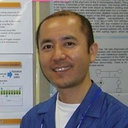Effect of Japanese cedar specific immunotherapy on allergen-specific T(H)2 cells in peripheral blood.
Palavras-chave
Resumo
BACKGROUND
The involvement of a shift from TH2 to TH1 responses in peripheral blood in pollen subcutaneous immunotherapy (SCIT) has been contentious, partly because of difficulties analyzing antigen-specific TH cells.
OBJECTIVE
To use recent technical advances to establish a more direct and simple method to analyze antigen-specific TH cells and to clarify the involvement of a TH2/TH1 shift in peripheral blood in pollen specific immunotherapy.
METHODS
After short-term (6-hour) antigen stimulation, antigen-specific TH cells in peripheral blood of Japanese children and young adults with Japanese cedar pollinosis undergoing SCIT were analyzed by multicolor flow cytometry for the presence of the activation marker CD154 and intracellular cytokines.
RESULTS
Twenty-eight patients between 5 and 22 years of age were enrolled in the study; 22 had started SCIT after enrolling in the study (SCIT group), and the remaining 6 were planning to start SCIT in the next off-season (control group). The number of Japanese cedar-specific interleukin (IL) 5-, IL-4-, interferon γ-, IL-17A-, IL-10-, and tumor necrosis factor α-producing TH cells without antigen-driven cell proliferation was determined. The seasonal increase in the number of Japanese cedar-specific IL-5- and IL-4-producing TH cells seen in the control group was suppressed in the SCIT group (P < .005 and <.001, respectively).
CONCLUSIONS
We report a powerful method for the analysis of antigen-specific TH cells in peripheral blood. This method will contribute to our understanding of immune mechanisms of immunotherapy and help us develop more sophisticated allergen specific immunotherapy.


